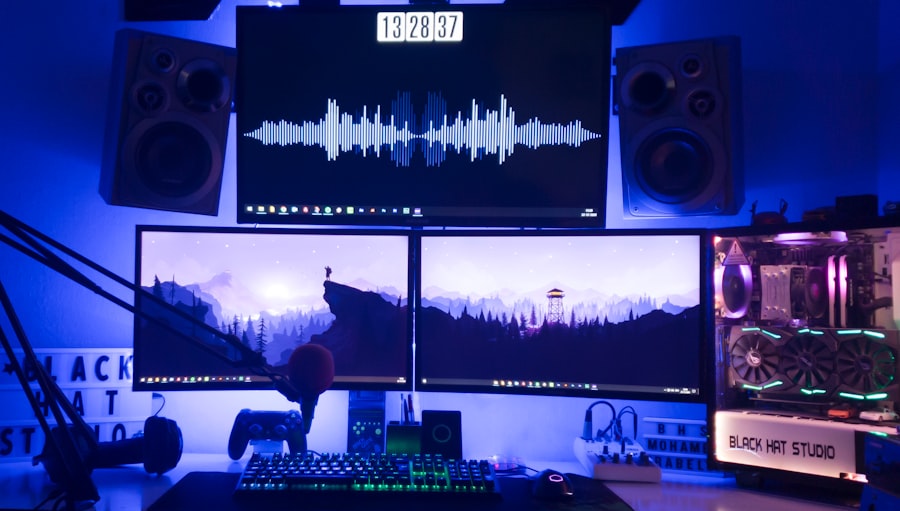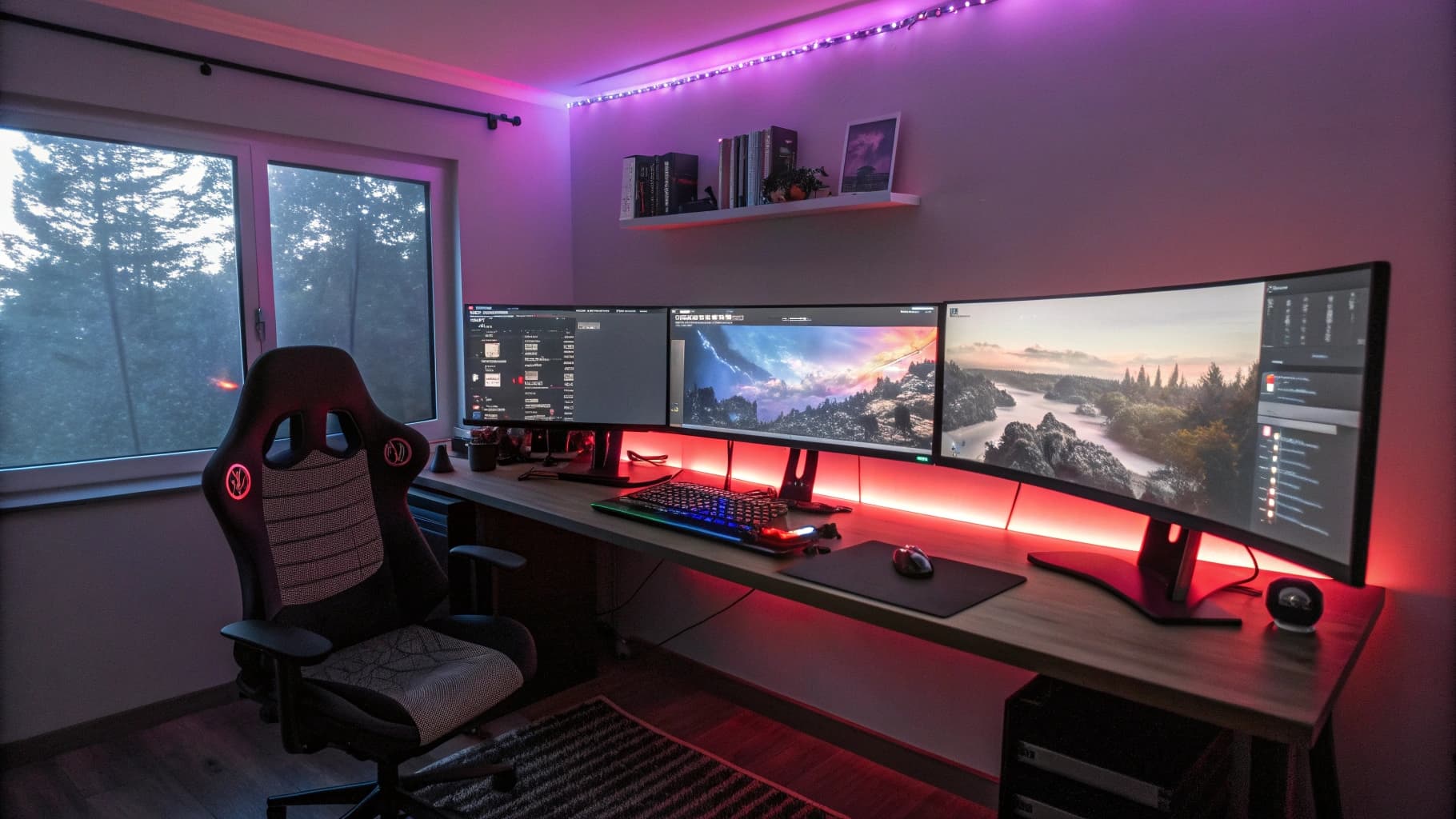As I delve into the world of technology, I find myself increasingly fascinated by the distinct needs and preferences of two prominent groups: gamers and professionals. While both categories often utilize similar hardware and software, their requirements diverge significantly based on their objectives. Gamers seek immersive experiences that transport them into virtual worlds, while professionals prioritize efficiency and productivity in their work environments.
This article aims to explore these differences in detail, shedding light on how each group approaches their respective tasks and the technology that supports them. In my exploration, I have come to appreciate that the distinctions between gamers and professionals extend beyond mere preferences; they reflect fundamental differences in how each group interacts with technology. For instance, while a gamer might prioritize high frame rates and stunning graphics to enhance their gameplay, a professional may focus on software compatibility and multitasking capabilities to streamline their workflow.
By understanding these differences, I can better appreciate the unique demands placed on technology by each group and how manufacturers cater to these needs.
Display Quality: Importance of High Refresh Rates and Response Times for Gamers

When it comes to display quality, I have observed that gamers place a premium on high refresh rates and low response times. These specifications are crucial for delivering smooth visuals and reducing motion blur during fast-paced gaming sessions. A display with a refresh rate of 144Hz or higher can make a significant difference in how I experience games, allowing for fluid motion and a more responsive feel.
This is particularly important in competitive gaming, where every millisecond counts, and a slight delay can mean the difference between victory and defeat. In contrast, professionals often prioritize color accuracy and resolution over refresh rates. While a high-resolution display is essential for tasks such as graphic design or video editing, the need for rapid refresh rates is less critical.
For me, a professional might find that a 60Hz monitor suffices for their daily tasks, as they are more focused on clarity and detail rather than the speed of motion. This divergence in display preferences highlights how the intended use of technology shapes the specifications that matter most to each group.
As I navigate through the realm of input devices, I notice that professionals often seek customization and precision in their tools. For instance, a graphic designer may rely on a stylus or a high-precision mouse that allows for fine control over their work. The ability to customize buttons and settings can enhance productivity, enabling me to streamline workflows and access frequently used functions with ease.
This level of precision is essential for professionals who require accuracy in their tasks, whether it be editing images or coding software. On the other hand, gamers tend to prioritize comfort and ergonomics in their input devices. A gaming mouse with customizable weights or a keyboard with mechanical switches can significantly enhance my gaming experience by providing tactile feedback and reducing fatigue during long sessions.
While precision is still important for gamers, the focus shifts towards creating an enjoyable experience that allows me to immerse myself in the game without discomfort. This difference in priorities illustrates how each group values distinct features in their input devices based on their specific needs.
In my experience, multitasking is a critical aspect of professional work. As a professional, I often find myself juggling multiple applications simultaneously—whether it’s managing spreadsheets, responding to emails, or conducting research online. The ability to switch seamlessly between these tasks is essential for maintaining productivity.
For this reason, many professionals invest in powerful computers with ample RAM and processing power to handle demanding workloads efficiently. Conversely, gamers often embrace multi-screen setups to enhance their gaming experience. I have seen how having multiple monitors can allow me to keep track of game stats, chat with friends, or even stream gameplay while playing.
This setup not only enhances immersion but also provides a strategic advantage in competitive gaming scenarios where information is key. The focus here is less about managing productivity and more about creating an engaging environment that enhances gameplay.
Audio quality plays a pivotal role in both gaming and professional environments, but the requirements differ significantly between the two groups. As a gamer, I find that surround sound systems or high-quality headphones can create an immersive experience that draws me deeper into the game world. The ability to hear subtle audio cues—like footsteps or distant gunfire—can provide a competitive edge in multiplayer games.
For me, the auditory experience is just as important as the visual one; it enhances my overall enjoyment and engagement. In contrast, professionals often prioritize clear communication and noise cancellation in their audio devices. Whether I’m participating in virtual meetings or collaborating with colleagues remotely, having a headset that delivers crisp sound quality while minimizing background noise is essential.
This focus on clarity ensures that I can communicate effectively without distractions, allowing for smoother interactions during work-related discussions. The differing audio needs of gamers and professionals highlight how each group values distinct aspects of sound based on their specific activities.
Ergonomics is another area where I see clear distinctions between gamers and professionals. For those of us working long hours at a desk, adjustable stands and eye care features are vital for maintaining comfort and preventing strain. I often find myself adjusting my monitor height or using blue light filters to reduce eye fatigue during extended work sessions.
These ergonomic considerations are essential for promoting health and well-being in a professional setting. Conversely, gamers tend to prioritize comfort and immersion when it comes to ergonomics. A well-designed gaming chair or an immersive VR setup can significantly enhance my gaming experience by allowing me to lose myself in the virtual world without discomfort.
While ergonomics still matter to gamers, the focus shifts towards creating an environment that enhances enjoyment rather than solely addressing physical health concerns. This divergence illustrates how each group approaches ergonomics based on their unique priorities.
Connectivity is another critical factor that differentiates gamers from professionals in their technology choices. As a professional, I often require multiple ports and compatibility with various devices to ensure seamless integration into my workflow. Whether I’m connecting external monitors, printers, or other peripherals, having a range of connectivity options is essential for maintaining productivity.
This need for versatility drives many professionals to invest in devices that offer robust connectivity features. In contrast, gamers prioritize low latency and high bandwidth when it comes to connectivity. A stable internet connection is crucial for online gaming experiences, where lag can severely impact performance.
For me as a gamer, having a router that supports high-speed connections can make all the difference during intense multiplayer matches. This focus on connectivity highlights how each group values different aspects of technology based on their specific needs.
Finally, cost considerations play a significant role in shaping the technology choices of both gamers and professionals. As a professional, I often find myself weighing budget constraints against potential return on investment when purchasing new equipment. Investing in high-quality tools can lead to increased productivity and efficiency over time; however, I must also consider my budget limitations carefully.
On the other hand, gamers are often willing to invest in premium features and aesthetics when it comes to their setups. The allure of cutting-edge graphics cards or visually stunning peripherals can drive me to spend more on gaming equipment than I might on professional tools. For many gamers, the experience itself justifies the expense; they seek out products that not only perform well but also look great in their gaming environment.
This difference in cost considerations underscores how each group approaches technology purchases based on their unique priorities. In conclusion, as I reflect on the differences between gamers and professionals, it becomes clear that each group has distinct needs shaped by their respective activities. From display quality to audio requirements, every aspect of technology serves different purposes depending on whether one is gaming or working professionally.
By understanding these differences, I can better appreciate the diverse landscape of technology tailored to meet the unique demands of both gamers and professionals alike.
FAQs
What are multi-screen systems?
Multi-screen systems refer to setups where multiple monitors or screens are used together to display content from a single computer or source. This can be used for gaming, professional work, or other purposes.
What are the needs of gamers in multi-screen systems?
Gamers often require multi-screen systems for immersive gaming experiences, with a wide field of view and increased peripheral vision. They may also need high refresh rates and low latency for smooth gameplay.
What are the needs of professionals in multi-screen systems?
Professionals often use multi-screen systems for increased productivity, allowing them to have multiple applications or documents open simultaneously. They may prioritize color accuracy, resolution, and screen real estate for their work.
How do the needs of gamers and professionals differ in multi-screen systems?
Gamers prioritize factors such as refresh rate, response time, and immersive experiences, while professionals prioritize factors such as color accuracy, resolution, and multitasking capabilities.
What are some common challenges in multi-screen systems for gamers and professionals?
Common challenges include compatibility issues, bezel gaps between screens, and the need for powerful hardware to drive multiple screens effectively. Calibration and setup can also be more complex in multi-screen systems.

